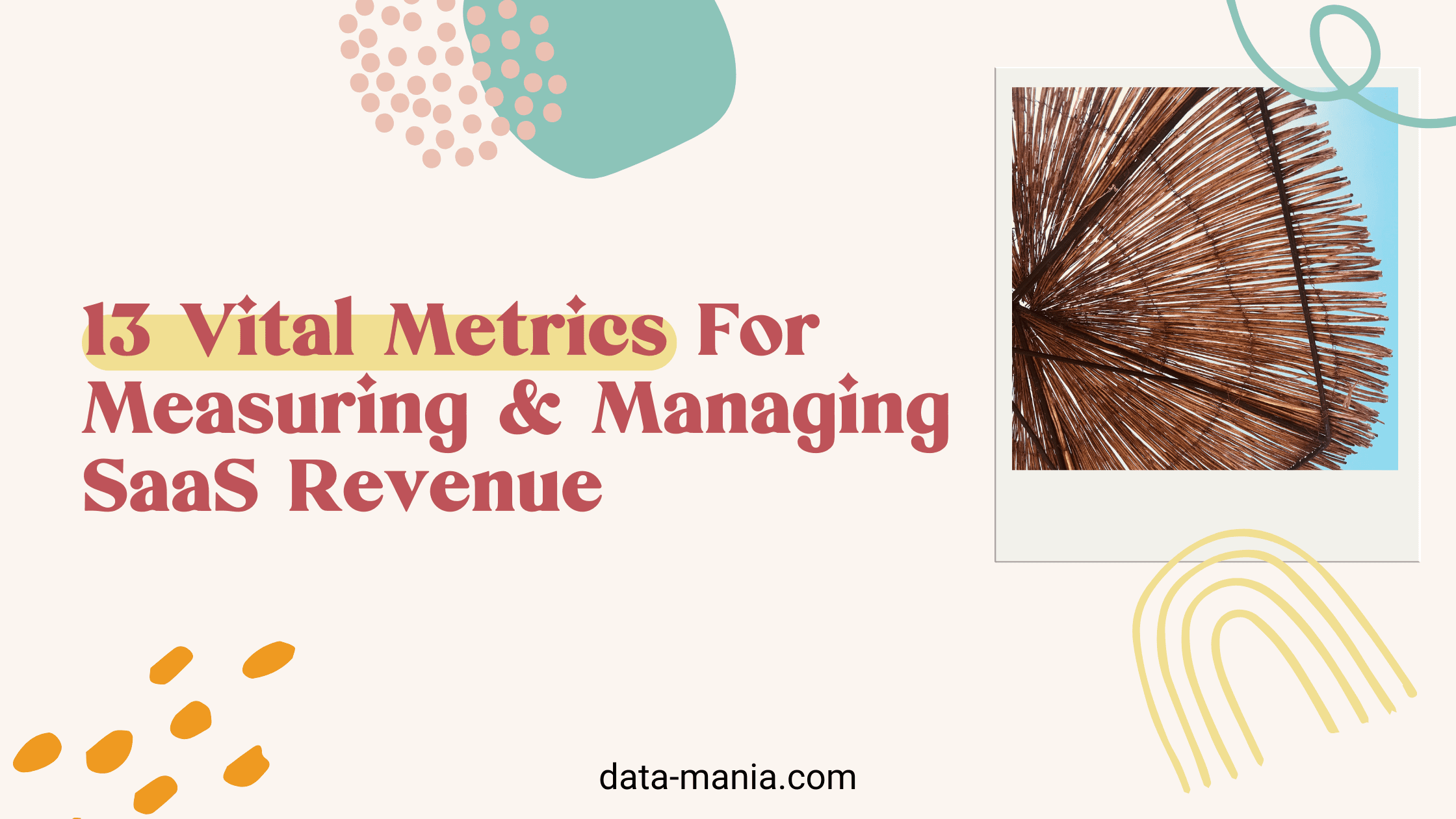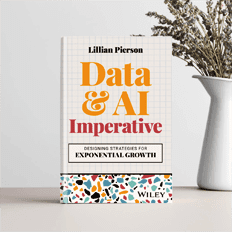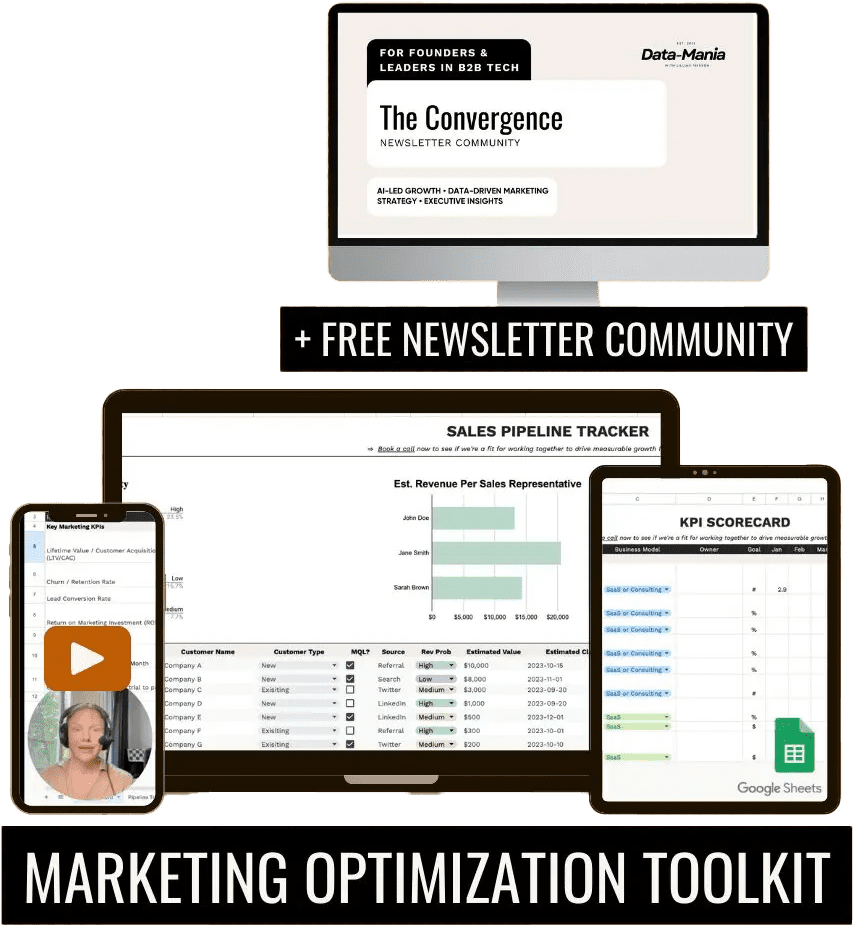One of the best things about founding a Software-as-a-Service (SaaS) company, in addition to the 85%+ margins, is how simple the SaaS revenue metrics are to track. These tech startups are so efficient and “lean”. That’s why there are only a handful of metrics that you need to diligently track to gauge the health of your business and how it’s growing.
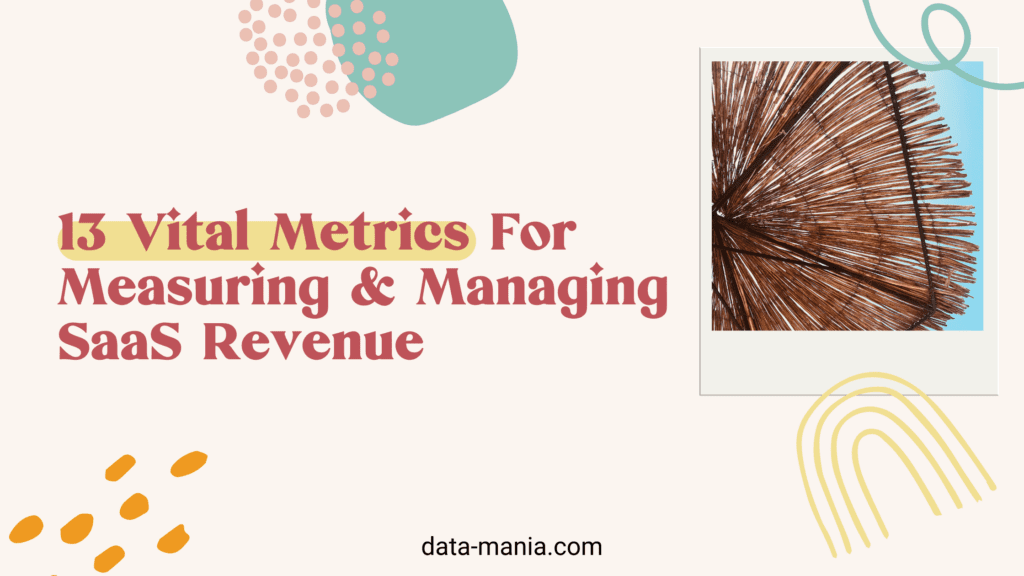
In this post, we’ll outline some of these key performance indicators (KPIs). We will also review why you need to start tracking these metrics if you aren’t doing so today. These metrics are crucial for securing successful funding rounds as your SaaS company grows and approaches its exit. Venture capitalists (VCs) and committed founders highly value these metrics as you await crucial funding rounds.
Let’s dive in!
What Are The Top 13 SaaS Revenue Metrics Founders Need To Care About?
Annual Recurring Revenue (ARR)
Annual Recurring Revenue (ARR) is the lifeblood metric of any serious SaaS company. SaaS companies usually offer B2B contracts billed annually, ranging from five to eight figures in value, depending on the client’s business size.
Typically, VCs like seeing at least $1m USD of ARR to invest in a startup’s Series A funding round. It’s one of the most straightforward metrics to track, but one of the most important, too. It shows how much revenue is coming in and is an anchor for describing the company’s overall size.
Monthly Recurring Revenue (MRR)
One of the more boring SaaS revenue metrics on this list, monthly recurring revenue (MRR), is calculated by taking the ARR and simply dividing by 12. Business-to-consumer (B2C) companies that charge smaller, monthly, subscriptions often used MRR. Jasper, an AI writing assistant, is an example of a B2C SaaS company that charges monthly subscriptions. They report their recurring revenue monthly, aligning with the frequency of incoming payments.
Reporting MRR has the advantage of allowing you to examine more detailed aspects of your incoming revenue. Specifically, you can concentrate on reporting monthly recurring SaaS revenue metrics such as:
- Churned MRR – MRR lost from customers that have churned.
- New MRR – MRR added from new sales/customers.
- Retained MRR – MRR retained from current customers.
- Downsell MRR – MRR lost to customer downsells.
- Expansion MRR – MRR gained from upsells and cross-sells to existing customers.
Customer LTV (Customer Lifetime Value)
Any SaaS company that wants to avoid getting swallowed into the abyss of failed Silicon Valley startups must focus on customer lifetime value. To calculate LTV, you first need to calculate your average customer value by multiplying your average sale value by the number of transactions. To calculate the LTV, you simply multiply customer value by your average lifespan.
Retaining customers for extended periods is crucial because it increases your company’s average customer lifespan, a positively correlated metric with Customer LTV. Since customer acquisition is expensive, it’s essential to focus on retaining them to ensure the continued growth of customer lifetime value. To look at this from a different angle, if your churn rate is increasing, it’s highly likely that your customer lifetime value is decreasing.
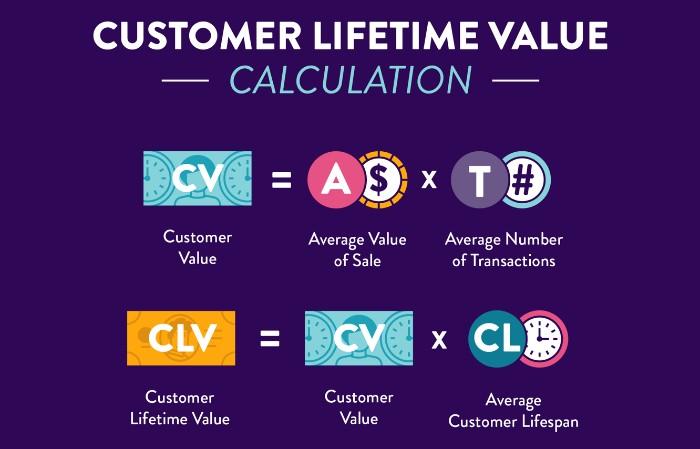
(Clevertap).
Customer Acquisition Cost (CAC)
Customer Acquisition Cost (CAC), pronounced as “cack”, is one of my favorite SaaS revenue metrics. Despite its funny name, CAC holds significant importance to a SaaS company’s overall margin, and improved through skillful optimization and knowledge of sales and marketing spend.
Customer Acquisition Cost intends to help the business understand how much it costs to acquire a customer. To lower the CAC of your SaaS business, it’s crucial to discover and implement effective and innovative sales and marketing strategies.
Customer Acquisition Cost is calculated by dividing a SaaS company’s sales and marketing (S&M) spend in the preceding period (typically month or quarter) by the number of new customers acquired in the current period.

(Hubspot).
CAC Payback
CAC Payback is one of the more important efficiency SaaS metrics to track. This metric reflects the number of months it will take a customer to fully pay back its CAC. To determine the CAC Payback, divide your SaaS company’s sales & marketing spend by MRR * Gross Margin.
CAC Payback = (S&M Spend)/(MRR * Gross Margin)
You can do this calculation with ARR as well. It will determine the number of years it will take a customer to fully pay back the CAC.
Runway
“Runway” refers to the length of time your business can keep operating with the cash you have in relation to your monthly spending. It’s called runway because if you run out of cash, your business is kaput (the plane crashes off the track).
The higher your runway, the better. It’s essential to keep this number manageable, as you may need to cut back on expenses to prevent your company from facing financial trouble.
Many SaaS companies have to lay off employees. They simply let their runway get too low. Tech sales employees who are not performing are usually some of the first to be let go.
LTV : CAC Ratio
LTV and CAC are important, and combining the two metrics into a ratio gives you a glimpse into a SaaS company’s potential growth.
If a company has an LTV : CAC Ratio of 1:1, that means the company isn’t growing. If a company has a negative LTV : CAC Ratio of, say, 0.5:1, then it’s spending more money to acquire a customer than it will ever generate from that same customer. But if a company has a ratio of 5:1, it’s thriving as it’s generating 5x the revenue it would cost to acquire a customer.
A “good” LTV : CAC ratio benchmark is typically 3:1. Many VCs consider companies with an LTV : CAC ratio of 3:1 – 10:1 to be “solid” investments.
Burn Multiple
Burn Multiple is a fascinating SaaS efficiency metric that gives insight into how much revenue your company generates per dollar burned. This metric considers all expenses made in your company, including those from the development team, sales and marketing, hosting costs, and even those cookies you bought for clients. It’s a great companion to the aforementioned LTV : CAC Ratio, which only considers sales and marketing metrics.
New Sales ARR vs. Sales & Marketing Expense
This SaaS metric is straightforward, yet it provides valuable insights into the company’s growth. It’s a quick way to show how efficient a company is at customer acquisition.
Simply take how much new ARR was generated by the sales team and compare it to the sales and marketing spend in a given period.
Ideally, the new ARR is higher than the sales and marketing spend.
Churn Rate (CR)
Churn rate refers to the percentage of customers that cancel their subscriptions or stop buying from your company. Customer churn is an important metric to track. It impacts customer lifetime value. You need to get your customers to stick around to extract annual or monthly recurring revenue from them. If you won’t, all that sales and marketing spend to acquire your customers will have gone to waste.
A typical healthy churn rate for a SaaS business is 5-15%, so less than 5% is considered elite. This shows investors that you have happy customers.
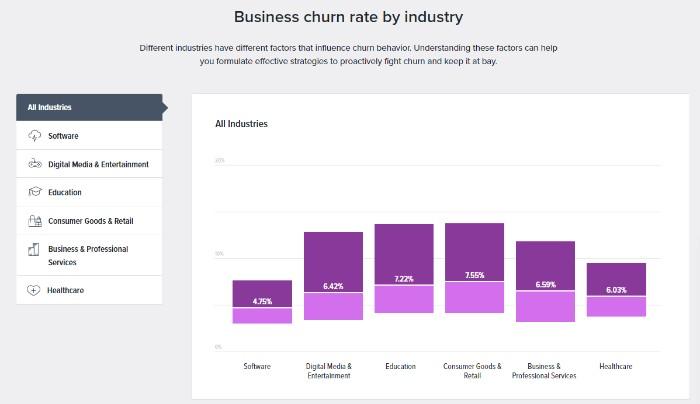
(Recurly).
Gross Margin
A classic business metric, Gross Margin is an important metric to keep track of in your SaaS business. To calculate this, simply by subtract the Cost of Goods Sold (COGS) from revenue. COGS refers to the sum of all costs for making a product, including labor, costs of hosting the software, and software development. An important note to remember with COGS is that it does not include sales & marketing spend.
A “good” margin for a SaaS company is at least 75%; however, it’s common to see early-stage SaaS companies have a lower margin than this. The reason is that they invest heavily in their COGS to develop their product quickly.
Net Revenue Retention (NRR)
Net Revenue Retention (NRR) is one of this list’s more complicated SaaS metrics. Retention metrics begin by grouping customers into “cohorts”. It’s based on when the customers were onboarded to the business. The purpose of this is to see how they trend over time. You’ll want to group these cohorts weekly, monthly, quarterly, and annually. A typical NRR cohort chart is below:

(Weld).
To calculate NRR, subtract the total revenue that has churned from the amount of new revenue and expansion revenue gained. A typical “strong” benchmark for NRR is 130%. NRR less than 100% is problematic. This means the company’s growth is not compounding over time.

(ChurnZero).
Customer Concentration
This SaaS metric is the only qualitative metric on this list. It’s essential to look at all the logos you’ve onboarded and ensure your company isn’t comprised of only a few “whale” logos.
If one or two logos in your SaaS company comprise 80% of your ARR, it’s a red flag. That means, one of those customers churning will have a catastrophic impact on your business.
If your company’s largest customer is <15% of your total ARR, that’s typically an excellent place to be.
Wrap Up
As a SaaS founder, staying on top of these SaaS revenue metrics is essential to making informed business decisions that drive growth. If you haven’t started tracking these metrics, I hope you’ll begin in the latter part of 2023. Good luck and happy growing!
Hey! If you liked this post, I’d really appreciate it if you’d share the love. Click one of the share buttons below!
A Guest Post By…
 This blog post was generously contributed to Data-Mania by Adam Purvis.
This blog post was generously contributed to Data-Mania by Adam Purvis.
Adam Purvis is an Enterprise SaaS Sales Account Manager. You can find him blogging about sales outreach, business software, and SEO at adamjohnpurvis.com. You can connect with Adam on LinkedIn.
If you’d like to contribute to the Data-Mania blog community yourself, please drop us a line at communication@data-mania.com.

